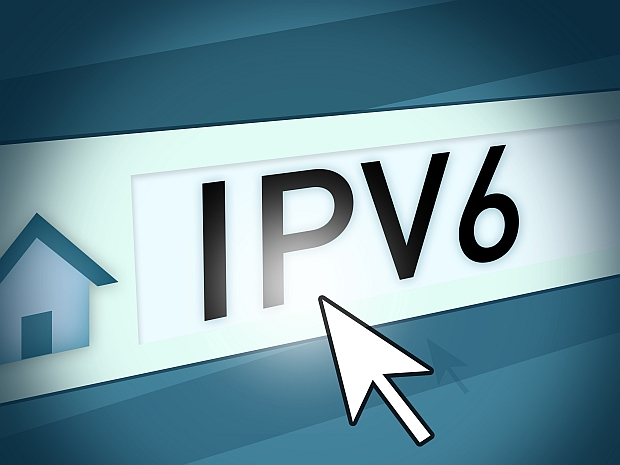Finally, IPv6’s killer app: The Internet of Things

Find a killer app.
That was the conclusion of our fateful board meeting back in 2008 when I was CEO of Hexago, a pioneering IPv6 network equipment vendor. I had raised a big round of financing a year earlier by riding on the high hopes of the IPv6 market, but we were already sensing the end of our cash runway. IPv6 adoption wasn’t happening as planned, so sales weren’t either.

And the plan was so simple too: ISPs would start migrating to IPv6 well in advance of any address crisis. Everyone would run dual-stack for a few years and then when the IPv4 addresses started to run out, ISPs would turn their IPv4 networks off and we would all be running IPv6. Neat and orderly. Theoretically perfect. Well engineered. But not well financed. While the engineers thought this was a logical and great idea, the finance people, well… not so much.
So while slipping down the first and steepest slope of the IPv6 hype cycle, the board decided we needed a plan B.
Enter My Home Portal
Eureka! We had it! Going against all my product validation instincts, we came up with My Home Portal (now called the Home Access Platform), and even managed to duct tape together a demo for the following board meeting. We decided to build a product around NAT traversal, one of the strengths of certain types of IPv6 tunnels. As we envisioned it, plug ‘n’ play connectivity to the home network would become the platform for next generation services that service providers could sell to their customers. Better yet, it would be the perfect justification to deploy IPv6… our very own killer app.
Need to access IP cameras in your home with your IPv4 phone? Check. Want to control your heat? Covered. By using a simple proxy/reverse proxy, on either end of an IPv6 tunnel, we would penetrate one of the hardest networking challenges, then and now: accessing the private home network from anywhere on the Internet. We even had one of our largest customers, Korea Telecom, do a proof of concept with around 100 customers. This left the board salivating, but they weren’t the ones we needed to eat the dog food.
To this day, people familiar with the story look at me with raised eyebrows and upturned palms when they describe the latest commercial they saw for a new home monitoring service from their ISP or an Internet-enabled thermostat, as if to say, why wasn’t that you? Ahead of the market… just like IPv6.
The “I” Whisper Grows Louder
Lately the whisper has grown into a buzz about a new acronym hitting the scene: IoT. That is the Internet of Things for the uninitiated. It is the networking of physical “things” into an information system that can be read, modified and interpreted to provide value – great value. How many things? Well, it depends who you believe but most predictions come in at 50 - 75 billon things connected by 2020.
Pair that with big data analysis and we have what some have described as the next generation Internet. Coincidentally, I know another acronym starting with the letter “I” referred to as the next generation Internet. IPv6, with its glorious address space, is just what’s needed to connect all those billions of things, or is it?
Cracks in the Silos
Today’s IoT networking is anything but standardized. As a relatively new technology that has grown separately to serve the needs of many masters, Internet of Things deployments are silos of proprietary or pseudo-open tech. Today, a more apt description would be the Internet of Gateways or the Internet of Cloud Middleware. Layer 3 protocols abound in both the slow moving industrial IoT and the rapid refresh world of consumer IoT.
Solutions, mostly focused on measuring cost variables in a business model, have driven the use of proprietary or homegrown networking in Supervisory Control and Data Acquisition (SCADA) systems in the industrial world. To date these SCADA deployments are custom affairs built to be used once to perform a very specific function.
On the consumer side, the motivating factors to build proprietary tech are different. Here, the market is still relatively small and developing. Companies must offer full solutions, from physical sensors, to mobile apps and everything in-between in order for the business to be economically feasible.
Although a simplistic view, it is easy to see why these two main market drivers of the Internet of Things are not open, using standards-based solutions. In both cases it’s a simple case of economics. There are not enough commercial off-the-shelf (COTS), plug ‘n’ play devices, networking tech and middleware available to develop cost-effective, specific solutions as demanded by industry and the home. And the market isn’t large enough yet for companies to only sell standards-based COTS plug ‘n’ play devices, networking tech and middleware.
Hence we’re faced with yet another chicken-and-egg dilemma, not all that different than the content-connectivity dilemma in the IPv6 market. However this time it’s different. Different because the money spent here has an ROI. It’s not a cost center. Unlike IPv6, it can improve the top- or bottom-line and that makes a world of difference.
Meet the New Standard – Same as the Old Standard
Standardization in the IoT market needs to start at the bottom — the bottom being layers 1 – 3 of the networking or IoT stack. IPv6, having proven itself in connecting people, has scalability, interoperability with lower layers, and has been integrated into almost every system imaginable. That, combined with its almost unlimited address space, makes it the hands-down choice for IoT network connectivity. It’s just a matter of time before the IPv6 tide rises high enough to drown out all other networking challengers and deliver on the benefits of standardization – cost savings and a wide breadth of interoperable products and solutions to fuel innovation.
IPv6 is not without its problems, especially in so-called low-powered, lossy networks, where memory and computation power isn’t plentiful. However. too many smart people (and organizations) with vested interests are working on finding solutions to these shortcomings for IPv6 to fail.
When the use of IPv6 reaches its tipping point, it will enable IoT to reach to its true potential. In return, the Internet of Things will become that IPv6 killer app that we were directed to find in that board meeting long ago.
For more information, see the special report, IPv6 & The Internet of Things on gogoNET. It includes a whitepaper, infographic, podcasts, videos and other resources.
Related coverage: